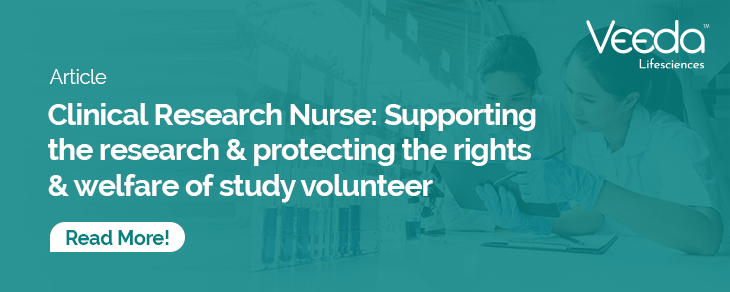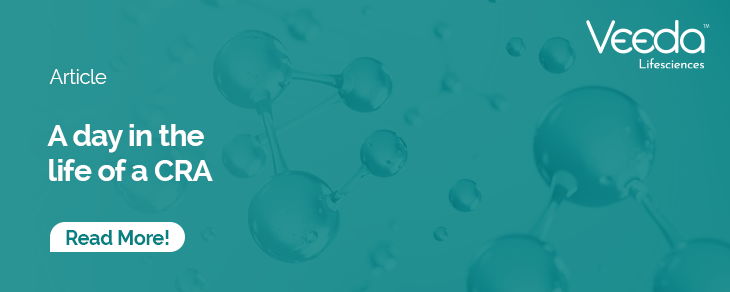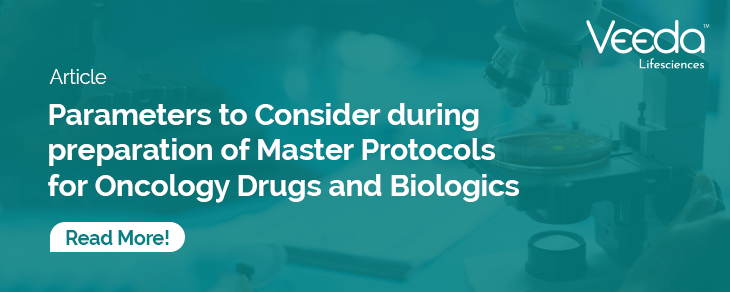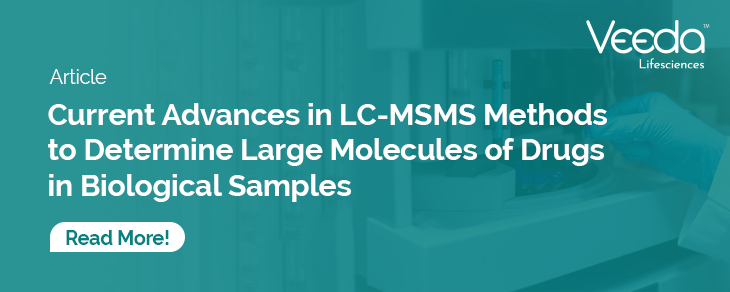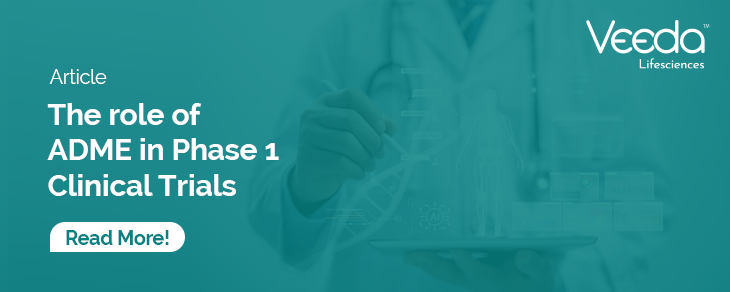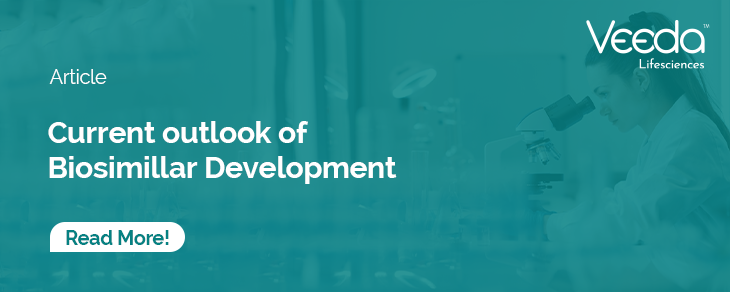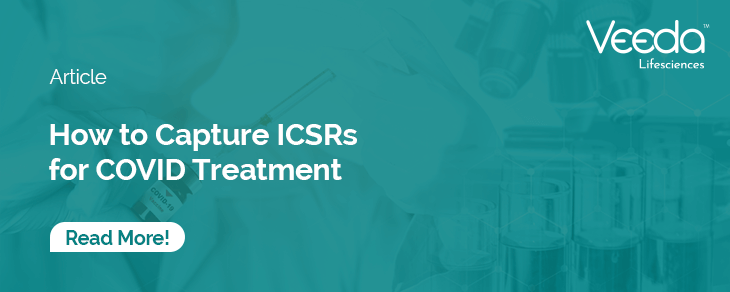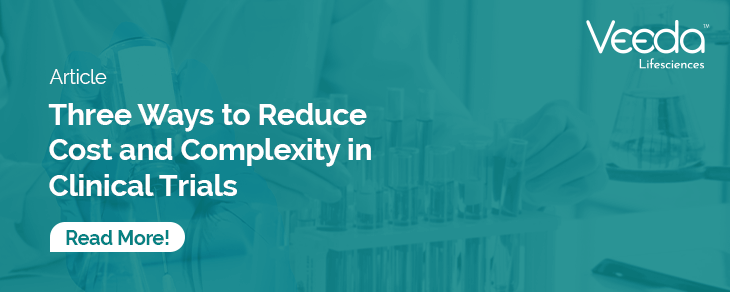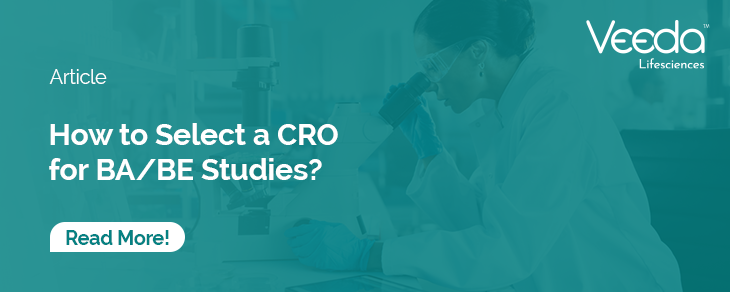Veeda, through its V-Konnect series, interacted with Dr. Susobhan Das and discussed “Current outlook of Biosimilar Development.”
About the V- Konnect
V-Konnect interview series is a program to get in touch with specialized industry experts to know their views on current relevant subject matters.
About Dr Susobhan Das – Founder & CEO at Amthera Life Sciences
Dr. Das is the Founder and CEO of Amthera Life Sciences Pvt. Ltd., a preclinical-stage biosimilar drug development company based in Bangalore.
Dr. Das has extensive techno-commercial experience in early-stage Biologics Development.
He has 20 years of experience in advanced biotechnology research and biopharmaceutical development.
He has served as a member of the USP Biologics and Biotechnology Expert Panel and also worked as a Director at the United States Pharmacopeia, India site.
Dr. Das has also worked at a senior management level at Intas Pharmaceuticals, developing biosimilars for global markets.
Dr. Das has worked as a member of the Expert Committee on Biologicals and rDNA Products: Indian Pharmacopeia Commission (IPC); Govt. of India.
He has authored research papers that are published in peer-reviewed National and International journals
Transcript.
1. What are the key international developments with respect to EU and USFDA biosimilar requirements?
A: One key development towards biosimilar acceptance has been the issuance of guidance on “interchangeability” by the US-FDA in May this year.
This will pave the way for the substitution of one product for the other without a prescriber’s involvement, as is the case for generic small-molecule pharmaceuticals.
This, I believe, is a significant action and will promote competition in the biologic market in the US.
Another development is the issuance of a revised guidance by the FDA titled “Development of Therapeutic Protein Biosimilars: Comparative Analytical Assessment and Other Quality Considerations,” also in May this year.
This is the revised version of an earlier guidance titled “Quality Considerations in Demonstrating Biosimilarity of a Therapeutic Protein Product to a Reference Product,” published on April 30, 2015.
FDA says this revision is to reflect on agency’s recommendations on the design and evaluation of comparative analytical studies intended to support a demonstration that a proposed therapeutic protein product is biosimilar to a reference product, and in anticipation that this will provide additional clarity and flexibility for product developers on analytical approaches to evaluating product structure and function.
For Europe, although the approval rate of Biosimilars is much higher than in the US, uptake of biosimilars is somewhat country-specific, with the large EU5 countries still not having interchangeability options.
However, payers have been significantly employing various tools, which may lead to higher biosimilar uptake.
For example, the introduction of prescribing targets, i.e., prescribing biosimilars to a predetermined percentage of patients.
The NHS of the UK introduced a biosimilar adoption framework with the idea that switching patients to a biosimilar may be inserted into clinical practice with incentive offerings for staff to offset switching costs.
This year in May, the NHS has published a document titled “What is a biosimilar medicine” for clinical and nonclinical stakeholders about the role of biosimilars in the healthcare system.
The document explains, among many other aspects, the overall savings from Biosimilars as well as suggests that a prescriber can switch from a reference to a biosimilar product.
However, switching at the pharmacy level is still not permitted without the consent of the prescriber as of now.
2. What are the main attributes for higher market approvals of Biosimilars in Europe compared to the US?
A: The first biosimilar, Zarxio, was approved in the United States only in 2015, whereas Omnitrope, another biosimilar, was approved by the European Medicines Agency (EMA) way back in 2006.
Since then, the EMA has approved more than 40 biosimilars as of 2019.
Essentially, this shows that EMA is the pioneering agency to advance biosimilars approval and uptake for the world.
To understand this, one may refer to the concept paper on the development of a guideline on the comparability of biotechnology-derived products published in 1998, which led to the introduction of a directive in EU legislation with the idea of “similar biological medicinal product” in 2001.
Therefore, a definition and a legal framework for market authorization for Biosimilars were first introduced in the world by the EU and are monitored and updated on an ongoing basis, which is key for a larger market approval rate of biosimilars in the EU.
By now, the EU has already gained experience of over a decade of Biosimilar use and has established the fact that biosimilars have similar efficacy and safety concerns to those of the reference products and can save a significant portion of healthcare costs.
Only three official biosimilars are in the market in the US, although around 15 are approved, and their uptake has been slower than anticipated.
For example, less than 15% for filgrastim biosimilar and 3% for the infliximab biosimilar hold as market share.
This is partly due to the lack of pricing incentives from biosimilars, as well as more attractive contract offers from the innovator product.
A host of other reasons for this slow approvals and uptake could be considerations on overall quality, safety, and clinical efficacy of the biosimilar, plus manufacturer reliability (supply without disruptions), reimbursement rates set by insurance companies or commercial payers, and support services for health care professionals and patients.
In other words, assurance on the efficacy and safety from the providers, as well as less out-of-pocket expenses, is key to most US patients.
Currently, this has yet to happen in the US, although progress has been made to achieve these goals.
On the contrary, a range of different policies to generate pricing pressure, drive adoption, and ultimately yield cost-savings for their healthcare systems have been implemented in the EU countries, which has somewhat led to a higher uptake rate for the biosimilars.
3. What is the scenario of prescribers’ acceptance of biosimilars over the innovator biological products?
A: At the beginning of the biosimilar era, the differences between lots in quality characteristics were cited to be reason enough for great concerns on efficacy and safety of the product.
From this, we have come to a stage where regulatory agencies have formalized acceptable changes of quality characteristics in the “innovator products” with no impact on efficacy and safety.
We also have more than a decade of real-world experiences of biosimilar use with comparable efficacy and safety concerns in the EU.
Moreover, we now have the outcome of the NOR-SWITCH trial, which demonstrated that “switching from infliximab originator to CT-P13 [a biosimilar] was not inferior to continued treatment with infliximab originator”.
All of these experiences, I believe, have led to higher prescribers’ acceptance of biosimilars over the innovator product, given there are incentives attached all through the stakeholders chain (for example, for the provider, prescriber, payer, and insurer).
The EU is clearly way ahead in implementing policies with the above considerations and will reap huge benefits in healthcare cost savings.
Although slow, the US has finally initiated action that may eventually allow biosimilars to be interchangeable with the innovator product.
First, to this idea was the finalization of the guidelines on interchangeability this year in May.
4. What is your opinion on Indian biosimilar industry, whether it attained its potential or this is just the beginning of the journey?
A: Indian biosimilar industry has now been very firmly established with defined regulatory path and a number of large and medium manufacturers with more than 70 biosimilars approved.
India is also the first country to approve a biosimilar monoclonal antibody to Rituximab in 2007, and interestingly, without having a published guideline, which first appeared in the year 2012 and in a revised form in 2016.
This approval has tremendously helped the patients to have access to the product with almost half the cost of the innovator product.
Interestingly, another mAb, Trastuzumab, indicated for HER2-positive breast cancer, is now available at almost 65% less than the innovator price, due to the launch of an Indian biosimilar.
Moreover, 3 companies from India have biosimilar products registered in the US, the EU, and Japan.
This shows the maturation of the Indian biosimilar industry as a global player.
Although these facts are very positive, India still has huge gaps in filling up the affordability factor with its very low per capita income.
On the contrary, India has a very high number of incidences and disease burden in most therapeutic segments, such as Cancer, Diabetes, Infections, Arthritis, Blood factor disorders, etc.
Therefore, affordable and quality biosimilars are a big opportunity for India.
However, what is critically needed is a policy framework somewhat similar to that being followed in the EU, which incentivizes all the stakeholders involved with biosimilar use, including the insurance sector.
Unfortunately, medicine costs in India are largely an out-of-pocket expense, and this needs to change very rapidly.
Given that these policies are implemented, the Indian biosimilar industry has tremendous potential to impact healthcare in a significant way.
5. Where does China stand with biosimilar approvals and the regulatory requirements?
A: This year, in February, Chinese regulators approved their first biosimilar.
A biosimilar Rituximab indicated for non-Hodgkin Lymphoma.
Although biotherapeutics development in China continue to grow exponentially over the past decade, no biosimilar drug however was approved until 2019.
This is primarily because of the lack of a national regulatory guidance, which was first published in February 2015.
This guidance document followed the same principles and requirements consistent with those formalized by the FDA and EMA.
Some other changes also happened simultaneously to foster pharmaceutical approvals and market authorizations, such as the China Food and Drug Administration (CFDA), which is now the National Medical Product Administration (NMPA), which falls under the State Administration for Market Regulation (SAMR).
The Centre for Drug Evaluation (CDE), which reviews applications under NMPA, remains unchanged in function.
China currently has more than 200 biosimilars under clinical development.
Interestingly, two key recent developments in policy setting by NMPA can be seen either as a barrier to biosimilar growth or as bringing serious competition: One is the listing of foreign-made drugs for urgent unmet medical needs, which can be approved for registration without any clinical trials being conducted in China.
Forty-eight such drugs have been listed for public review, out of which 11 are biologic drugs.
The second one is reduced or no import cost of new cancer drugs or drugs for hard-to-treat cancer.
Another very interesting development is the Market Authorization Holder (MAH) program implemented by the Chinese regulatory agency as a pilot program, which allows holders of an NMPA biologics approval to have the option to manufacture the drugs on their own or use any contract manufacturer.
This policy has given a significant boost to the CMO industry inside China and will surely foster growth in the Chinese Biosimilar industry along with new drug development.
6. How switching and interchangeability affect biosimilars access and its market size?
A: EMA and the EU commission define 3 terms related to biosimilar switching: interchangeability, switching, and automatic substitution.
Interchangeability is a general term that includes both switching, when the prescriber decides to use one over another, and substitution, when this exchange happens at the pharmacy level without the consultation of the prescriber.
In the US, though, FDA-designated interchangeability may refer to automatic substitution at the pharmacy.
Europe has been at the forefront in terms of interchangeability and currently allows physician-guided transitions of biosimilars, restricting pharmacy-level substitution, and this is without any separate or additional
regulatory guideline or drug development criteria.
As a result, we see a very high uptake of Biosimilars in some select EU countries.
Therefore, we may envisage that interchangeability or substitution will surely bring competition as well as uptake and cost savings.
Indeed, a follow-on biologic to Lantus, like Basaglar, has gained a market share of around 30 percent, and the Neupogen market share is down by 20 percent from the competition of Zarxio, a biosimilar.
Disclaimer:
The opinions expressed in this publication are those of the Interviewee and are not intended to malign any ethic group, club, organization, company, individual, or anything.
Examples of analysis performed within this publication are only examples. They should not be utilized in real-world analytic products as they are based only on the personal views of the Interviewee.
They do not purport to reflect the opinions or views of the VEEDA CRO or its management.
Veeda CRO does not guarantee the accuracy or reliability of the information provided herein.


